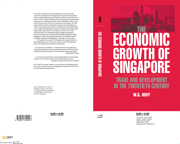Book contents
- Frontmatter
- Contents
- List of figures
- List of tables
- Preface and acknowledgements
- Abbreviations and conventions
- Geographical definitions
- Introduction
- Part One Themes and beginnings
- Part Two Development as a staple port, 1900–1939
- Part Three Staple port and rapid growth, 1947–1990
- 10 The staple port resurgent: development to 1959
- 11 Markets, government and growth, 1960–1990
- 12 Conclusion
- Appendix tables
- Bibliography
- Index
10 - The staple port resurgent: development to 1959
Published online by Cambridge University Press: 22 September 2009
- Frontmatter
- Contents
- List of figures
- List of tables
- Preface and acknowledgements
- Abbreviations and conventions
- Geographical definitions
- Introduction
- Part One Themes and beginnings
- Part Two Development as a staple port, 1900–1939
- Part Three Staple port and rapid growth, 1947–1990
- 10 The staple port resurgent: development to 1959
- 11 Markets, government and growth, 1960–1990
- 12 Conclusion
- Appendix tables
- Bibliography
- Index
Summary
‘When the Union Jack was lowered on Fort Canning, in Singapore, on that Sunday morning it marked the sudden and dramatic end of an epoch in our Colonial Empire.’
Letter to The Times, 24 Feb. 1942‘When at school I was taught that Singapore is impregnable and I thought then as I think now, What in the heck is Great Britain doing in Singapore, anyway? All right, it's in a fine position to control the sea-lanes but I can't see that this off-shore European island (meaning ourselves) has any business there, Raffles or no Raffles.’
George Beardmore, Civilians at war: journals, 1938–1946 (Oxford, 1986), p. 125By 1950 Singapore had largely recovered from the devastation of World War II, and again began to develop economically. The present chapter traces the course of this development to 1959. In assessing Singapore's pre-World War II economic growth and free trade inheritance, section I sums up the arguments of Part Two of this book, and puts them in the context of post-war development. The remainder of the chapter deals with the 1950s. Section II looks at Singapore's trade, which remained that of a staple port. In section III, the linkages arising from this trade through the expansion of infrastructure, manufacturing industry and financial development are examined. During the 1950s the decisive changes in Singapore were demographic and political, the subjects of sections IV and V respectively.
- Type
- Chapter
- Information
- The Economic Growth of SingaporeTrade and Development in the Twentieth Century, pp. 273 - 298Publisher: Cambridge University PressPrint publication year: 1994



